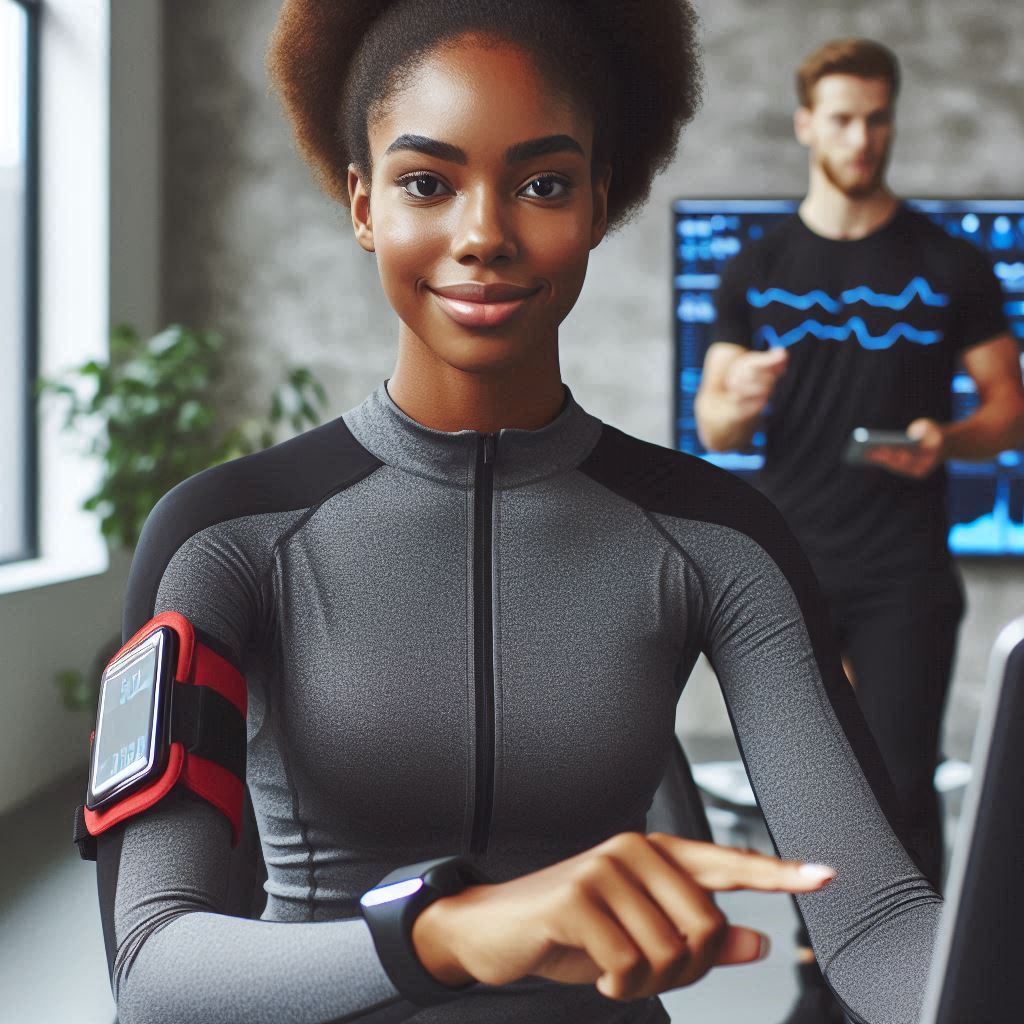Introduction
Human kinetics is the scientific study of human movement. It explores how the body moves and functions during physical activity.
This field combines anatomy, physiology, biomechanics, and psychology to understand movement.
Practical training in human kinetics courses is vital. It bridges the gap between theory and real-world application.
Students learn by doing, which enhances their understanding and skills.
Practical training allows students to apply theoretical knowledge in real-life scenarios.
This hands-on experience is crucial for mastering complex concepts. It ensures students are well-prepared for their future careers.
Human kinetics involves diverse activities, from sports performance to rehabilitation.
Practical training helps students grasp these varied aspects. They learn to analyze and improve physical performance through direct involvement.
Instructors guide students through practical exercises, ensuring they apply concepts correctly.
This mentorship is essential for skill development. Students receive immediate feedback, which accelerates learning and improvement.
Practical sessions often include laboratory work, field activities, and internships.
These experiences expose students to different environments and challenges. They gain insights that are impossible to achieve through lectures alone.
In human kinetics, understanding movement mechanics is crucial. Practical training allows students to observe and analyze movement patterns.
They learn to identify inefficiencies and devise strategies for improvement.
Working directly with athletes or patients is a significant aspect of practical training. Students develop interpersonal skills and professional competence.
This real-world interaction is invaluable for their future careers.
Practical training also promotes critical thinking and problem-solving. Students face unexpected challenges and must adapt their knowledge to find solutions.
This process is vital for developing a proactive and flexible mindset.
The importance of practical training in human kinetics cannot be overstated. It transforms theoretical knowledge into practical expertise.
This combination is essential for success in the dynamic field of human kinetics.
Overview of practical training in human kinetics courses
Practical training in human kinetics courses involves hands-on learning experiences to apply theoretical knowledge.
It provides students with opportunities to develop essential skills required in their future careers.
Types of practical training offered
- Fieldwork: Students engage in practical activities in real-life settings such as fitness centers or sports teams.
- Laboratory experiments: Students conduct experiments to understand the principles of human movement and physiology.
- Clinical placements: Students work in healthcare settings to apply their knowledge in rehabilitation or sports medicine.
Benefits of practical training for students
- Enhanced understanding: Practical training helps students link theory to real-world applications.
- Skills development: Students gain hands-on experience that enhances their practical skills and competencies.
- Professional networking: Students have the opportunity to build connections with industry professionals during practical training.
- Improved employability: Practical training equips students with the skills needed to succeed in their future careers.
Challenges faced during practical training
- Time constraints: Balancing practical training with academic coursework can be challenging for students.
- Resource limitations: Limited access to equipment or facilities may hinder the quality of practical training.
- Supervision issues: Inadequate supervision during practical training can affect the learning experience of students.
- Communication barriers: Lack of clear communication between students and supervisors can lead to misunderstandings.
Read: Scholarships for Human Kinetics Students in Nigeria
The significance of hands-on experience
Importance of real-world application of theoretical knowledge
Hands-on experience bridges the gap between theory and practice in human kinetics courses.
Students often struggle to connect classroom knowledge to real-world scenarios. Practical training provides the essential link, making abstract concepts tangible.
By applying theory in real situations, students deepen their understanding.
This experiential learning approach solidifies foundational knowledge and enhances retention.
It ensures that students can translate classroom lessons into practical skills. Real-world application fosters a comprehensive grasp of human kinetics principles.
This method transforms passive learning into active, engaged participation. Consequently, students become more competent and confident in their abilities.
How practical training enhances critical thinking and problem-solving skills
Practical training challenges students to think critically and solve problems. In real-world settings, students face unpredictable situations requiring quick thinking.
This experience develops their ability to analyze and adapt swiftly. By tackling real-life problems, students learn to devise effective solutions.
This hands-on approach encourages creative thinking and innovation. Practical training pushes students out of their comfort zones, promoting intellectual growth.
It equips them with the tools to handle complex issues independently. As a result, students develop a proactive mindset and resilience.
These skills are invaluable for professional success in human kinetics fields.
Opportunities for networking and skill development through practical training
Practical training offers abundant opportunities for networking and skill development. Students interact with professionals, gaining insights into the industry.
These connections can lead to internships, jobs, and mentorship opportunities. Networking during practical training expands students’ professional circles.
It exposes them to diverse perspectives and best practices. Moreover, hands-on experience hones technical and soft skills.
Students learn teamwork, communication, and leadership in real-world contexts. These competencies are critical for career advancement.
Practical training thus provides a holistic educational experience. It prepares students to enter the workforce as well-rounded, skilled professionals.
Hands-on experience in human kinetics courses is vital. It enhances theoretical knowledge, fosters critical thinking, and provides networking opportunities.
Transform Your Career with Expert Guidance
Get personalized mentorship consulting that’s tailored to your unique path. Our expert advice is actionable and exclusive.
Get StartedThis practical approach prepares students for successful careers in the dynamic field of human kinetics.
Read: Importance of Human Kinetics in Nigerian Sports
Case studies of successful practical training programs
Examples of universities or institutions known for their effective practical training in human kinetics courses
Practical training in human kinetics courses is essential for students to gain hands-on experience in their field.
Here are some examples of universities or institutions known for their effective practical training programs:
- University of British Columbia: Offers practical training opportunities in their well-equipped labs and sports facilities.
- Ohio State University: Provides students with internships at top sports organizations for real-world experience.
- University of Florida: Known for its partnerships with professional sports teams for practical training opportunities.
Success Stories of Students Who Have Benefited from Practical Training Experiences
Practical training experiences have a significant impact on students’ career readiness and job placement.
Here are some success stories of students who have benefited from practical training:
- Emily, a student at the University of British Columbia, secured a job at a sports clinic after completing her practical training.
- James, a graduate of Ohio State University, landed a position at a major sports team due to his practical experience during his studies.
- Sarah, a former student at the University of Florida, credits her internship with a professional sports team for kickstarting her career in sports management.
Impact of Practical Training on Career Readiness and Job Placement
Practical training plays a crucial role in preparing students for their future careers in human kinetics.
Here are some key ways in which practical training impacts career readiness and job placement:
- Hands-on experience: Practical training allows students to apply theoretical knowledge in real-world settings, enhancing their skills and competencies.
- Networking opportunities: Through practical training, students can build valuable connections with professionals in their field, increasing their chances of securing employment.
- Industry knowledge: Practical training exposes students to the latest trends and practices in human kinetics, ensuring they are up-to-date and competitive in the job market.
Read: How to Excel in Human Kinetics and Health Studies

Explore Further: Nigerian Educational Reforms in ICT
See Related Content: Preparing for Biology Exams: Tips and Strategies
You Might Also Like: Biology Education and Research Opportunities
Explore Further: Biology Education Scholarships for Nigerian Students
Find Out More: Latest Trends in Nigerian Agricultural Science Education
Strategies for maximizing practical training opportunities
When it comes to practical training in human kinetics courses, it is essential for students to maximize their opportunities in order to gain valuable hands-on experiences that will benefit them in their future careers.
Here are some strategies for students to make the most out of their practical training:
Tips for maximizing practical training opportunities
- Be proactive in seeking out diverse practical experiences to broaden your skill set.
- Take initiative in asking questions and seeking guidance from experienced professionals.
- Reflect on your experiences to identify areas for improvement and growth.
- Network with industry professionals during your practical training to expand your connections.
- Seek feedback from mentors and supervisors to enhance your performance.
Importance of seeking mentorship and guidance
- Mentors can provide valuable insights and advice based on their own experiences.
- Guidance from experienced professionals can help you navigate challenges and obstacles.
- Mentorship can provide opportunities for personal and professional development.
- Having a mentor can help you set realistic goals and stay focused on your objectives.
- Building a strong mentorship relationship can lead to long-term career success.
Leveraging practical training experiences for future career prospects
- Highlight your practical training experiences on your resume and job applications.
- Showcase the skills and knowledge you have gained during your practical training.
- Use examples from your practical training to demonstrate your capabilities in interviews.
- Seek recommendations from supervisors and mentors to strengthen your professional reputation.
- Stay connected with industry professionals you meet during your practical training for future opportunities.
Overall, practical training in human kinetics courses can be a valuable stepping stone towards a successful career in the field.
By following these strategies and taking advantage of the opportunities that come your way, you can maximize your practical training experiences and set yourself up for future success.
Read: Notable Human Kinetics Graduates in Nigeria
Learn More: Biology Education and Sustainable Development Goals
Addressing the challenges of practical training in human kinetics courses
Practical training in human kinetics courses is essential for students to apply theoretical knowledge in real-life scenarios.
However, it can pose challenges that need to be addressed for a successful learning experience.
Common challenges faced during practical training
- Lack of Resources: Some institutions may struggle to provide adequate resources such as equipment, facilities, and qualified instructors for practical training.
This can hinder students from gaining hands-on experience. - Limited Time for Training: Due to the academic schedule, there might be limited time allocated for practical training sessions.
This can restrict the depth and breadth of learning experiences for students. - Safety Concerns: Engaging in physical activities during practical training can pose safety risks for students.
It is crucial to ensure a safe learning environment to prevent accidents or injuries.
Solutions to Common Challenges
- Collaboration with Industry Partners: Universities can collaborate with industry partners to access state-of-the-art facilities and equipment for practical training.
This partnership can enhance the quality of training programs. - Flexible Scheduling: By offering flexible scheduling options, institutions can facilitate practical training sessions at convenient times for students.
This flexibility allows for a more comprehensive learning experience. - Emphasis on Safety Protocols: Implementing strict safety protocols and guidelines can mitigate safety concerns during practical training.
It is essential to prioritize student safety above all else.
Ways to Improve Training Programs
- Incorporation of Real-World Scenarios: Introducing real-world scenarios in practical training can enhance students’ problem-solving skills and critical thinking abilities.
This hands-on approach prepares students for future challenges. - Integration of Technology: Utilizing technology such as virtual simulations and wearable devices can provide a more interactive and engaging learning experience.
Technology can also facilitate data collection and analysis during training sessions. - Peer-to-Peer Learning: Encouraging peer-to-peer learning allows students to collaborate, exchange ideas, and learn from each other’s experiences.
This fosters a supportive learning community and promotes knowledge sharing.
Importance of Feedback and Evaluation
Regular feedback and evaluation are crucial components of practical training programs in human kinetics courses.
They provide insights into student performance and help in continuous improvement.
Feedback allows instructors to identify areas where students may be struggling and tailor their teaching methods accordingly.
It also offers students the opportunity to reflect on their progress and make necessary adjustments to enhance their skills.
Evaluation helps in assessing the effectiveness of training programs and identifying areas for improvement.
It ensures that the learning outcomes are met and provides a basis for enhancing the quality of practical training sessions.
In a nutshell, addressing the challenges of practical training in human kinetics courses requires a proactive approach.
By implementing effective solutions, improving training programs, and emphasizing feedback and evaluation, institutions can create a conducive learning environment for students to excel in their practical skills and knowledge.
Delve into the Subject: Impact of Mobile Technology on Nigerian Education
Conclusion
Practical training is essential in human kinetics courses. It allows students to apply theoretical knowledge in real-world settings.
Summary of key points discussed in the blog post
- Practical training enhances practical skills among students
- It bridges the gap between theory and practice
- Hands-on experience boosts confidence and competence
Students are encouraged to actively participate in practical training sessions to maximize their learning potential and future career opportunities.
Final thoughts on the importance of hands-on experience:
Hands-on experience is crucial for success in the field of human kinetics. It equips students with the necessary skills and prepares them for real-world challenges.




